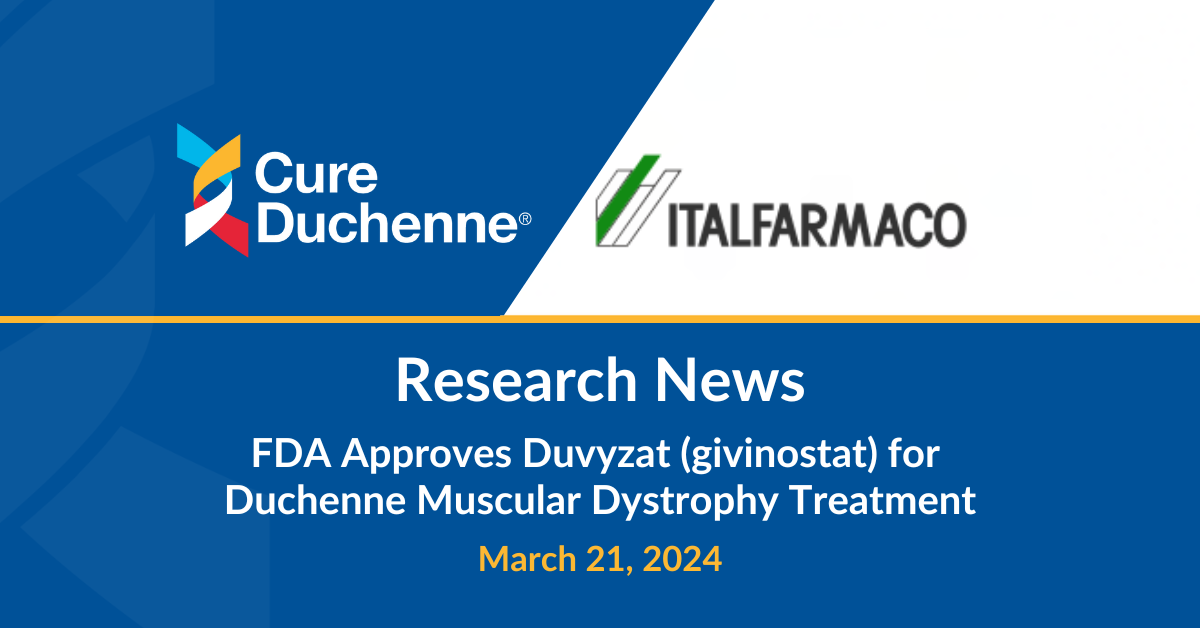Santhera and ReveraGen Announce Positive and Statistically Highly Significant Topline Results with Vamorolone in Pivotal VISION-DMD Study

June 1, 2021
VISION-DMD 24-week study readout: Update from Santhera
Dear U.S. Duchenne community,
We are happy to provide an update of the VISION-DMD Phase 2b study conducted by Santhera partner ReveraGen BioPharma, investigating vamorolone for the treatment of Duchenne muscular dystrophy. VISION-DMD is a double-blind, randomized, placebo-controlled study assessing the efficacy and safety of vamorolone administered orally at doses of 2 mg/kg/day and 6 mg/kg/day versus prednisone 0.75 mg/kg/day and placebo in ambulant boys ages 4 – <7 years old with Duchenne muscular dystrophy. We are thrilled to report today that in the results of the 24-week data readout vamorolone demonstrates strong efficacy across primary and secondary endpoints in both doses of 6 mg/kg/day and 2 mg/kg/day. The primary endpoint of Time to Stand velocity is met for vamorolone 6 mg/kg/day with high statistical significance (p=0.002) versus placebo. The study confirmed a good safety and tolerability profile of vamorolone for both doses.
This is a 48-week study and is the first of two data readouts. The study will end in Q3 2021 and a full read out of the study data will be available in Q4 2021. Santhera and ReveraGen would like to emphasize our gratitude to all of the families who are participating in the ongoing VISION-DMD study.
VISION-DMD is an international, multi-center study run in 11 countries and 33 clinical trial sites across Europe, North America, Australia, and Israel. The VISION-DMD study completed enrollment of 121 ambulant boys ages four to less than seven years old in August 2020. During the first treatment period of 24-weeks, participants were randomized to receive vamorolone 2 mg/kg/day, vamorolone 6 mg/kg/day, prednisone 0.75 mg/kg/day, or matching placebo. For the second treatment period of 24 weeks, participants who received 2 or 6 mg/kg/day doses of vamorolone remain on those doses. Participants who were randomized to receive prednisone or placebo in the first treatment period were then randomized and switched to one of the two vamorolone doses. Those on prednisone are tapered down across four weeks and then start their assigned vamorolone dose. The primary outcome measure of the study is Time to Stand (velocity). Many other secondary and exploratory endpoints were collected as well, including the six-minute walk test, time to run/walk 10 meters, behavioural side effects, and bone health biomarkers. To learn more about the VISION-DMD trial protocol, please visit www.clinicaltrials.gov.
What are the study results at 24-weeks?
The primary endpoint of Time to Stand velocity in the 6 mg/kg/day group compared to placebo from baseline to 24-weeks is met with a significance level of p=0.002 and a treatment difference of 0.06 rises/second from baseline [95% CI: 0.02-0.10). This means that a significant difference was detected in how fast the participants could rise from a laying position on the floor in the group of participants receiving the highest dose of vamorolone vs. participants treated with placebo. The participants in the 6 mg/kg/day group of vamorolone improved their time to stand from baseline of 6.0 seconds to 4.6 seconds after 24 weeks of treatment. The placebo group deteriorated in their time to stand from baseline from 5.4 to 5.5 seconds.
Analyses of select secondary endpoints supported the superiority of vamorolone versus placebo in multiple secondary endpoints. Time to stand velocity for the 2 mg/kg/day vamorolone group versus the placebo group was statistically significant (p=0.02). The six-minute walk test, or the distance walked in six minutes, for the 6 mg/kg/day group versus placebo was highly statistically significant (p=0.003) as well as for the 2 mg/kg/day vamorolone group versus placebo (p=0.009). The time to walk/run 10 meters in the 6 mg/kg/day group compared to the placebo group also reached statistical significance (p=0.002). No statistically significant differences were observed between the vamorolone 6 mg/kg/day group and the boys treated with prednisone across these endpoints at the 24-week study timepoint.
Upon examination of the adverse events reported for the 2 mg/kg/day and 6 mg/kg/day, both doses showed a favorable safety and tolerability profile, with slightly fewer treatment emergent adverse events in the 2 mg/kg/day group (96 events) and the 6 mg/kg/day group (91 events) when compared to the prednisone group (120 events). The vamorolone 6 mg/kg/day group showed a significant difference in growth velocity when compared to the prednisone group (p=0.02). Additional safety data is being analyzed and we will continue to keep the community updated on our findings.
What does this mean for trial participants?
The VISION-DMD study will continue until each participant has completed 48 weeks of treatment. All participants who complete 48 weeks of treatment are offered continued access to vamorolone via either an expanded access program, individual named patient program, or other compassionate use program, depending on their country of residence. Trial participants who have questions about the next steps of the trial should reach out to their clinical trial site.
What does this mean for the U.S. DMD community?
The statistically significant data at 24-weeks provide the foundation for a new drug application to the FDA. Santhera will be discussing the results further with the FDA and we plan to submit a new drug application in Q1 2022. Santhera hopes to share additional information about the study and timelines at scientific conferences over the summer.
In closing, we would like to take this moment to express our deep appreciation to the families who are participating in the VISION-DMD study. Your commitment to the study, even in the midst of a global pandemic, is remarkable and acknowledged. As a company, Santhera is unyielding in our pursuit of treatments to slow the progression of Duchenne muscular dystrophy. On behalf of Santhera, we will continue to keep you posted on our progress and the final study results later this year.





